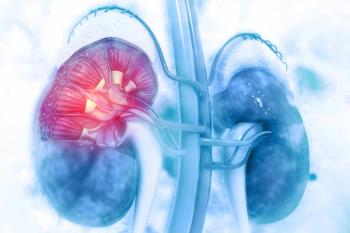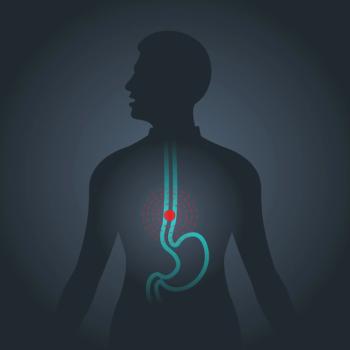
FDA Mandates New CAR T-Cell Therapy Boxed Warnings in Hematologic Cancers

The agency recommends that all patients receiving CAR T-cell products should be monitored life-long for secondary malignancy risks.
The FDA has required updated boxed warnings for secondary T-cell malignancy risks in patients who receive CAR T-cell immunotherapies targeting BCMA or CD19, according to a press release from the regulatory agency.1
The agency previously issued a
According to the agency, the risk of T-cell malignancies extended to all currently approved products in this drug class, which included the following agents:
- Idecabtagene vicleucel (ide-cel; Abecma)
- Lisocabtagene maraleucel (liso-cel; Breyanzi)
- Ciltacabtagene autoleucel (cilta-cel; Carvykti)
- Tisagenlecleucel (tisa-cel; Kymriah)
- Brexucabtagene autoleucel (Tecartus)
- Axicabtagene ciloleucel (axi-cel; Yescarta)
An assessment of findings from post-marketing adverse effects (AEs) and clinical trial reports from the agency highlighted that mature T-cell malignancies such as CAR-positive tumors could develop within weeks following infusion. Additionally, some cases of secondary T-cell malignancies were reported to be fatal.
Due to the previously described evidence, the agency consequently formed class safety label changes in January 2024 for each of the 6 approved CAR T-cell products. Boxed warning revisions were necessary to indicate the risk of developing secondary T-cell malignancies following treatment. Additionally, other sections of the product labeling—including the Warnings and Precautions, Postmarketing Experience, and Patient Counseling Information and Medication Guide—required updates.
According to an
The most common secondary primary malignancy highlighted in the AE report was leukemia (62.1%; n = 333/536), which made up 2.7% (n = 333/12,394) of all CAR T-cell therapy reports. Specifically, secondary cases of leukemia included myelodysplastic syndrome (MDS; 38.8%; n = 208/536) and acute myeloid leukemia (AML; 19.8%; n = 106/536). The second most common type of secondary primary malignancy was the development of skin neoplasms (10.1%; n = 54/536), including non-melanoma skin neoplasms (7.8%; n = 42/536) as well as skin melanomas (2.2%; n = 12/536).
“The disproportionality analysis suggests an increased risk of reporting certain [secondary primary malignancies], notably myeloid and T-cell malignancies. The low numbers do not provide conclusive evidence of the risk of [secondary primary malignancies] after CAR T therapy,” the study authors noted.3 “Dedicated registries to study [secondary primary malignancies] post–CAR T can offer valuable insights for patient care and future development. This becomes pertinent as CAR T therapies expand to nonmalignant conditions.”
An analysis of secondary primary malignancies in the CAR T-cell therapy reports highlighted significantly higher odds of reporting MDS following treatment with axi-cel (reporting odds ratio [ROR], 3.5; 95% CI, 2.9-4.2), tisa-cel (ROR, 1.3; 95% CI, 1.0-1.8), liso-cel (ROR, 4.6; 95% CI, 2.4-8.5), ide-cel (ROR, 2,8; 95% CI, 1.2-6.7), and cilta-cel (ROR, 6.7; 95% CI, 3.3-13.5). A higher ROR for AML occurred following treatment with tisa-cel (ROR, 1.5; 95% CI, 1.2-2.0) and cilta-cel (ROR, 4.1; 95% CI, 1.3-12.8).
“Moving forward, particularly as the use of CAR T cells for indications outside hematology and oncology is considered, new strategies involving targeting insertion of the CAR construct to specific loci might help reduce the risk of cancers due to integration of the CAR construct at oncogenic loci within the genome,” Nicole Verdun, MD, and Peter Marks, MD, PhD, both from the FDA’s Center for Biologics Evaluation and Research, stated in a perspective piece published in New England Journal of Medicine regarding the risks of secondary malignancies following treatment with T-cell therapies.4
“Appropriate product labeling will be a resource that can help clinicians manage conversations with patients about the benefits and risks associated with treatment options,” they added.
References
- FDA requires boxed warning for T cell malignancies following treatment with BCMA-directed or CD19-directed autologous chimeric antigen receptor (CAR) T cell immunotherapies. News release. FDA. April 18, 2024. Accessed April 19, 2024. https://tinyurl.com/5n8pm5ca
- FDA investigating serious risk of T-cell malignancy following BCMA-directed or CD19-directed autologous chimeric antigen receptor (CAR) T cell immunotherapies. News release. FDA. November 28, 2023. Accessed April 19, 2024. https://tinyurl.com/ypyct5dh
- Elsallab M, Ellithi M, Lunning M, et al. Second primary malignancies after commercial CAR T cell therapy: analysis of FDA Adverse Events Reporting System (FAERS). Blood. 2024. doi.10.1182/blood.2024024166
- Verdun N, Marks P. Secondary cancers after chimeric antigen receptor T-cell therapy. N Engl J Med. 2024;390(7):584-586. doi:10.1056/NEJMp2400209
Newsletter
Stay up to date on recent advances in the multidisciplinary approach to cancer.



















































































